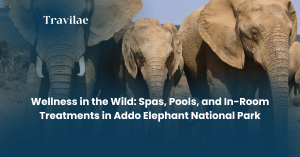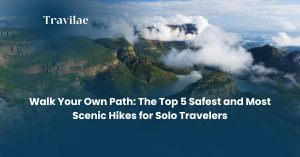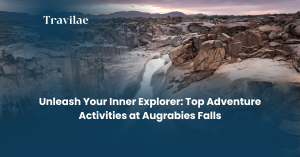Traveling solo in Addo Elephant National Park is an invitation to immerse yourself in the rhythms of the wild—and to capture those moments on camera, all on your own terms. With no one to distract you or rush you along, you have the freedom to wait for the perfect shot, experiment with angles, and truly connect with your subject. Here’s how to make the most of solo wildlife photography in Addo, whether you’re a beginner or a seasoned shutterbug.
1. Plan Your Route Around Waterholes and Wildlife Hotspots
Waterholes are Addo’s prime wildlife stages. Plan your self-drive route to include favorites like Harpoor Dam, Carol’s Rest, and Peasland. These spots attract elephants, buffalo, zebras, warthogs, and more—often all at once. Arrive early or linger late for the best light and most animal activity. Sometimes, just parking and waiting quietly yields the most magical scenes, like elephants swimming or herds jostling for a drink.
Tip:
Don’t rush from sighting to sighting. Take your time at each waterhole—patience is the secret to capturing unique animal behaviors and interactions.
2. Use the Main Camp’s Underground Hide for Close-Ups
The underground hide at Main Camp is a solo photographer’s dream. Here, you’re just meters from the action, with benches for comfort and a discreet vantage point for up-close shots. Silence is golden—prepare your camera before entering, as even the sound of a zipper can disturb both animals and fellow visitors. The hide is especially good for photographing elephants, buffalo, and birds at eye level.
Pro Tip:
Be mindful that the ground in front of the hide can sometimes cut off animals’ feet in your photos. Adjust your position and embrace creative framing.
3. Pack Smart and Be Ready
- Gear: Bring a camera with a zoom lens, plenty of memory cards, and spare batteries. Binoculars help you spot animals before photographing them.
- Essentials: Sunscreen, hat, sunglasses, snacks, and lots of water. You might spend hours waiting for the perfect moment.
- Stability: A beanbag or small tripod can help steady your camera on the car window or at hides, especially for long lenses.
4. Master the Art of Solo Shooting
- Stay in Your Vehicle: For your safety and the animals’ well-being, never leave your car except at designated areas. Use your vehicle as a mobile hide—shoot through open windows for stability and minimal disturbance.
- Use Natural Light: Turn off your flash and use the soft, golden light of early morning or late afternoon for the best results. Overcast days also offer beautiful, diffused light.
- Anticipate Behavior: Watch for signs that animals are about to move, interact, or display interesting behaviors. Solo, you can focus fully on these subtle cues.
- Shoot in Burst Mode: When action happens—like elephants splashing or zebras running—use burst mode to capture a sequence of shots and choose the best later.
5. Capture the Whole Story
- Wide Shots: Don’t just zoom in—include landscapes, herds, and the context of the wild to tell a richer story.
- Details: Focus on textures, like the red earth on an elephant’s skin or the spiral horns of a kudu.
- Moments: Photograph not just the animals, but also the quiet moments—sunrise over the plains, a warthog snoozing in the dust, or the reflection of a buffalo in the water.
6. Respect Wildlife and Fellow Visitors
- Silence is Key: Keep noise to a minimum, especially in hides. Silence allows you to observe natural behaviors and enhances the experience for everyone.
- Don’t Disturb: Never approach or feed animals. Respect their space and avoid sudden movements.
- Be Patient: Some of your best shots will come from waiting and watching, rather than chasing after every animal you see.
7. Enjoy the Freedom and Reflection
Solo wildlife photography in Addo is as much about the experience as the images. Without a companion, you can lose yourself in the moment—waiting for the light to change, watching a herd interact, or simply savoring the peace of the bush. These are the moments that make your photos truly special.
Ready to capture your own Addo story? Pack your camera, embrace the quiet, and let the wild inspire you—one unforgettable shot at a time.






